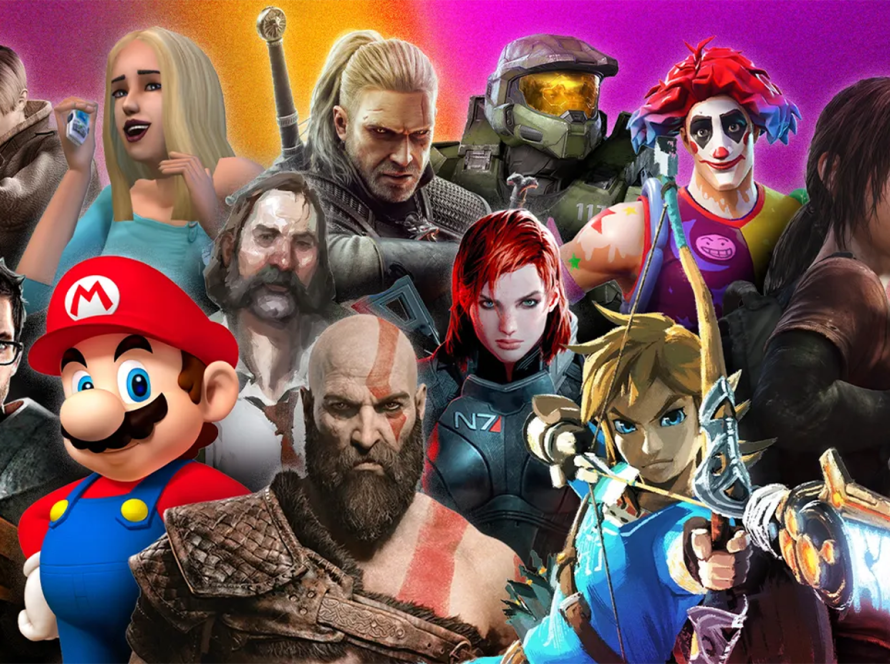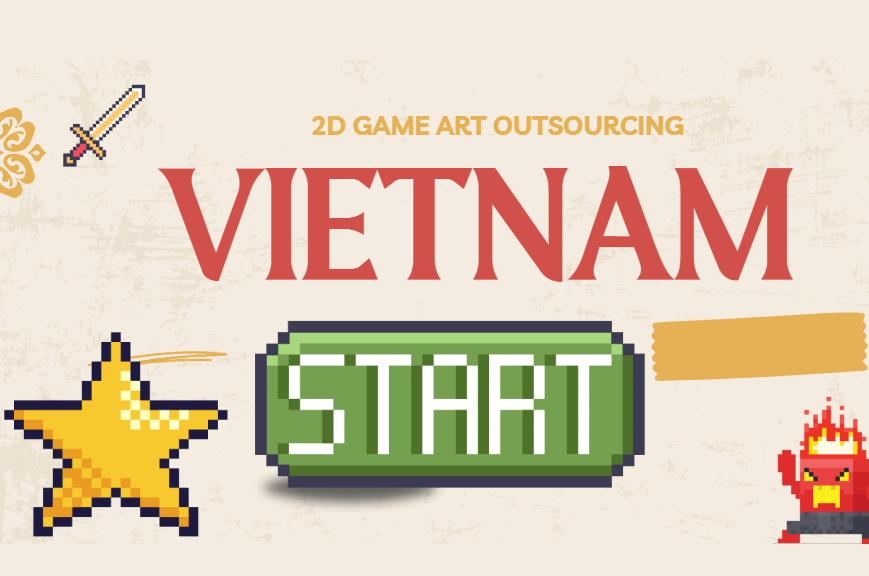The world of 2D games is an endless playground for creativity, and the background is where unique ideas are sublimated. From majestic mountains, dense forests to futuristic cities, 2D game backgrounds can take us anywhere, opening doors to unexplored worlds. In this article, we will delve into the world of 2D game backgrounds, to better understand the magic they bring
What is 2d games backgrounds
Backgrounds in 2D games, also known as backdrops, play a key role in shaping the theme, atmosphere and plot of each level. These backgrounds are not just a simple decorative element but also an indispensable part of the game experience, where the game world is conveyed visually. With two-dimensional coordinates and flat images, 2D games create a unique gameplay space where the background is responsible for creating virtual depth, enhancing immersion, and guiding the player through the game world. Background layers are often meticulously designed, and can include static or dynamic details, to optimize the visual experience while not distracting from the main gameplay.
The common types of 2d game background designs
Here are 3 typical types of background designs for 2d games
Design with patterns
Repeating patterns are a powerful tool for storytelling and world-building in 2D games. They are not just simple repeating images, but an opportunity for you to express the unique personality and atmosphere of the game. Repeating patterns can be abstract visual elements, or motifs inspired by important objects in the game. In some cases, these patterns can even move subtly, creating a dynamic background that draws the player’s attention. The secret to successful repeating pattern design lies in connecting them to the overall narrative and aesthetic of the game
Design With Gradient & Flat Colors
In 2D game background design, one of the most basic approaches is to use a solid background, which usually consists of a single color or a gradient that spans the entire frame. This type of background is especially suitable for hyper-casual and minimalist games, where the focus is on gameplay and interactive elements. Instead of complex and detailed scenes, a solid background helps create focus, reduces distractions, and makes it easier for players to grasp important elements in the game. Games like “Rise Up” and “Color Switch” are great examples of effective use of this type of background, proving that simplicity is sometimes the key to success.
Design with skybox
Skybox, also known as ‘sky box’, is a 2D background design method that creates realistic sky and space effects around the game. To understand better, imagine a cube that surrounds the entire game world, with the player at the center. Instead of drawing the sky on a flat surface, Skybox uses this cube and texture mapping it onto its inner surface. Game developers, including studios like 7SwordGames, often use Skybox to quickly create impressive sky backgrounds, enhancing the quality of game images
Tips for Creating 2d game backgrounds
Color
A color palette is more than just a list of colors you use, it is also a powerful tool for shaping the style and mood of your game. If you ignore this element, you can accidentally create beautiful backgrounds that completely clash with each other. Imagine a game with a lush green forest background, then a sunny desert background with two completely different color palettes – the player experience would be unbalanced, even unpleasant. Each background would feel like a separate entity, not related to the other, breaking the continuity and losing the immersion in the game world
Changing Animation Speed
During the game design process, we can adjust the scrolling speed of the background to enhance the player experience at key segments. For example, in the final levels of the game, we increased the scrolling speed of the background layers to create a sense of speed for the car, thereby adding drama and excitement to the player. Changing the scrolling speed of these layers is not just a visual effect, but also a useful tool to control the player’s pace and emotions.
Using Parallax Layers
Parallax Scrolling is an essential technique in 2D game background design, especially for games that are side-scrolling or top-down. The main purpose of Parallax is to create the effect of depth and three-dimensional space in a 2D environment, thereby enhancing the immersive experience and appeal of the game. By allowing background layers to move at different speeds, the background layers will feel distant, while the foreground layers will feel close to the player.
This combination of speed and distance tricks the player’s vision, making them feel like they are moving in a vivid 3D space. At 7SwordGames, we always try to exploit the potential of Parallax Scrolling to create truly impressive 2D game worlds
Animate Backgrounds
To make 2D game backgrounds more vivid and attractive, don’t forget to use animation. You can apply animation to environmental elements like bushes swaying in the wind, flowers swaying gently, terrain moving slightly, or clouds drifting across the sky. For tiling backgrounds, you can create a slow transition effect, making them appear to be in continuous motion, adding depth and life to the scene.
Faqs
What are some emerging trends in 2D game background design?
Emerging trends in 2D game background design include a greater emphasis on dynamic backgrounds with animated elements and parallax scrolling to create depth. We’re also seeing a rise in stylized and painterly backgrounds, moving away from purely pixel art, and incorporation of procedural generation to create unique and expansive environments. Furthermore, there’s a trend toward more interactive backgrounds, responding to player actions and enhancing immersion
What are the best tools for creating parallax scrolling effects in 2D backgrounds?
Game engines like Unity and Unreal Engine are popular choices, as they offer built-in features for managing and layering 2D background elements with varying scroll speeds. For creating the layered background assets, programs like Adobe Photoshop, Aseprite (for pixel art), or Affinity Designer are commonly used. Furthermore, specific plugins and scripts within these engines can streamline the parallax effect implementation, optimizing performance and visual results.
How can you optimize background graphics for performance in 2D games?
To optimize 2D game background performance, it’s crucial to use tileable textures or texture atlases to reduce draw calls. Employing parallax scrolling with fewer background layers, and scaling down high-resolution art to appropriate dimensions minimizes memory usage. Also, ensure your background art assets are compressed appropriately and consider using culling techniques to avoid rendering off-screen elements
What are the challenges of creating parallax scrolling backgrounds?
Creating parallax scrolling backgrounds presents several challenges. Firstly, achieving seamless layering and movement of background elements at varying speeds requires careful planning and precision. Secondly, optimizing performance to avoid frame rate drops, especially with multiple layers, demands efficient asset management and coding. Finally, maintaining visual consistency and avoiding jarring transitions across the different scrolling layers can be a complex task, requiring a strong understanding of 2D game art principles.
Conclusion
We can see that the magic of 2D background games lies in their ability to create immersive and unforgettable experiences for players. From the smallest details to the overall layout, every element contributes to building a realistic and engaging virtual world. By taking care of the background, you are opening the door for players to enter emotional adventures and discover the hidden wonders in your game world.




